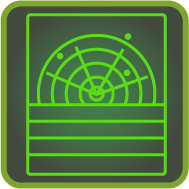Mastery of fieldcraft enables soldiers to move stealthily, avoid detection, and maintain situational awareness in diverse and challenging environments. Proficiency in fieldcraft will enhance a unit’s ability to conduct reconnaissance, ambushes and prolonged operations without resupply. This article contains tried and tested tips to ensure you can survive and operate effectively in the field, giving you a strategic edge and improving your chances of mission success in hostile environments.
When it comes to field tips, nothing beats experience. It is those small tried and tested tricks that can make all the difference between being a hot mess or thriving. The below tips are a collection of ‘hot tips’ from Army’s finest:

- Use strapping tape to tape up the handle on your canteen’s cup.
- Be proficient working in silence.
- Use hand signals.
- Constantly look in to your commander.

- Waterproof and tear proof all books, maps, and documentation.
- Use waterproof notepads or tape the exterior.
- Laminate maps or place them in map protectors.

- Thread a ‘useful length’ of hoochie or para cord through the loops of your bush hat.
- Para cord can make emergency bootlaces – but be aware… it is designed to not tangle as part of the parachute opening process, so your laces tend to come loose.
- Para cord has seven internal threads that are quite strong and can be used for all manner of things.
- Tie jungle knots to each corner of your hoochie. This makes for an easy set up and take down of your hoochie while still being tactically efficient.
- Using different sized cord and differently sized knots to tie off zipper pulls can help with differentiating zippers by feel, particularly at night or with gloves on.

- Camouflage, concealment, and cover. Understand what the differences are, and how to make best use of each given your tactical situation and enemy threat. Success against detection sensors, targeting systems from the Mk1 human eyeball, long-range thermal imagers, UAVs, and satellites will come down to the ability to remain undetected and protected.
- Fighting position arc markers should be clearly visible from your fighting position. This will assist you and others during periods of night fighting and during the day. Ensure you retrieve the arc markers during morning routine if you are abandoning your position.
- Hide your vehicle tracks when leaving a formed road into a temporary hide. Tracks through undisturbed ground can be easily spotted, especially from the air. Place deadfall, branches, leaf litter, or hessian over the tracks to reduce the visible signature.

- Bring a steel flint fire starter, you never know when you'll need a fire (when the tactical situation allows it).
- Compressed gas items (stoves, deodorant, shaving cream, Zip burners) are awesome but not supported by the log chain. Also, RAAF doesn’t allow these items on their aircraft.
- Every piece of kit you carry has to earn its place. Look at everything and ask yourself ‘do I actually need this?’
- Keep your living kit and high use items (food, toiletries, first aid supplies, water) on the outside of your field pack for ease of access.
- A used bike tube cut into bands can act as an industrial strength rubber band with many uses in the field, including managing the wires on your EF88, or holding the caps onto your BNVD.
- Carry an empty sandbag – they weigh next to nothing and have a range of uses. They can be marked and are stronger than garbage bags.
- Don’t rely on the ‘watch pins’ on the wrist-mounted GPS – these are a weak point, and the GPS will carry information that, when lost, could be catastrophic. Instead, install the same device in a wrist-mounted GPS pouch.
- Consider attaching the GPS to your personal weapon – you take both with you everywhere and guard both with your life.
- Don’t cut the finger off your field gloves for dexterity – cut a hole in the first knuckle, big enough for your finger and, if needed, poke your finger out for the task then return it to the safety of the glove.
- Shrink wrap a pair of socks for your pack. They can stay there for years without being used and if airtight will take up minimal space.
- Keep your elastic bands from your ration pack by wrapping them around the top of your water bottle neck – useful for securing your range card or attaching camouflage to your weapon or your ambush position.

- The 1 per cents make the difference, like what coffee or treats you bring.
- Changing into clean socks and undies makes the world of difference to the way you feel.
- When you are stuck in the rain with no hoochie, a cup of hot coffee makes it (almost) better.
- Think of morale when developing section SOPs for every time you get woken up for piquet: you must (quietly) say “Hell yeah”. Increases morale and wakes you up.










